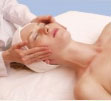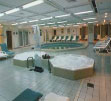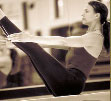
Onsen
An onsen is a Japanese hot spring. The onsen is essentially a Japanese public bath (sento) with normal hot spring water, and its history and manners are very closely related to the sento. The onsen plays a vital role in Japanese culture, offering socially institutionalized relief from the pressures of the modern Japanese twelve-hour work ethic and a chance for Japanese to break down the hierarchal life of society through the mutual nudity of skin ship.
Ideally, they need to be outdoors (though many are indoors), use naturally hot water directly removed from a natural volcanic spring, and they are often overstated with (or, in the cheaper varieties, replaced by) a very wide variety of extravagant spa baths, non-natural waterfalls and saunas. The essential difference amid an onsen and any sento (communal bath house) is that the water in an onsen should be volcanic spring in the origin, even if again heated,whereas a sento might use ordinary heated water. Onsen water is often by way of healing powers according to its mineral properties and onsens often have few different baths, each increased by the addition of different minerals or the composition of the tub.
Note that at an onsen, as in bath you wash your body and clean yourself thoroughly before you enter the hot water. This is fundamental in a public place as inward bound the onsen while still dirty or covered in soap would cause chaos and may disturb the views of other people. At the very least, if you have not yet washed (perhaps because you showered half an hour earlier) use the scoop again provided to splash water over your genitals and feet, thus emblematically cleansing them.
The most significant features of the onsen by far are the water and the bathing services that is why many bathers just come for an hour or so to soak in the waters even if they do not stay. Probably the next most important issue for Japanese guests could be the food, a good onsen inn (or ryokan) would offer what it claims is something particular in the way of the evening meal. Because ryokan tend to quietly pressure people towards eating their sunset meal at set times (e.g. 6pm) the baths are often isolated around this hour of the day, this is a good time to hit the tub. While rub and other services are a lot offered, they are peripheral.
If you go with your friend to an onsen it is quite possible that the experience of being buck nude together in a pool of hot water would break down some of the hierarchical stiffness inherent to Japanese work life. However, most visitors to onsen are not work groups but could friends, couples and families. It is not very common to see a father or mother introducing a small child to the onsen for the first time. Very small children of either sex up to about 7 years old could be seen in both male and female baths. Mixed-sex bathing is a tradition, which persists at onsen in the more rural areas in Japan, although these days there are commonly a separate women-only bath in addition to the mixed bath. Wearing swimsuits is openly forbidden at the more customary onsen and will be considered odd at most. Nudity is the usual state of affairs at an onsen.
Onsen are places to relax and although the baths are typically quiet it is a silence interrupted by the odd sign or grunt of satisfaction. There is nothing wrong talking silently with friends or partners. People in the same bath or pool might well strike up with a conversation with you (at least if you are a foreigner). Often, people would be seen in the water with a towel, over the groin for men and for chest to groin for women. Note that this is approximately only seen in these settings, and most people never dress in their towel in this fashion. Indeed, it is considered bad manners to dip your towel in the onsen water at all; although you would infrequently see Japanese do this. The towel is sometimes folded into a square and worn on the head, though this is by no means a norm.








